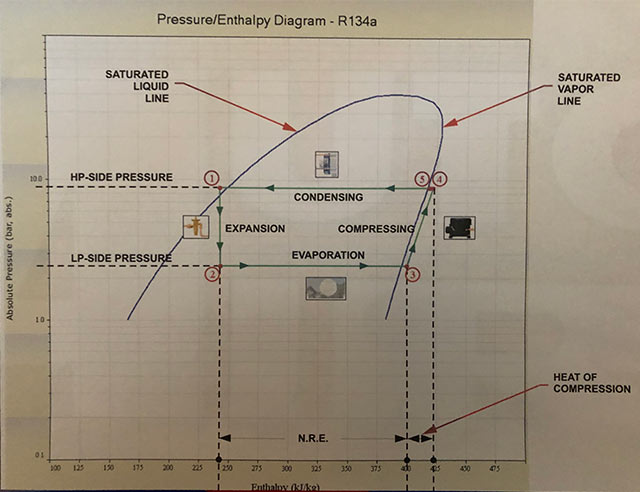
Why the need for air conditioning systems?
Heat is what really makes an air conditioning system necessary. Heat can be described in many different ways but is in essence a form of energy. This “heat” energy is what our bodies are very sensitive to. We need the right amount of heat to feel comfortable. This is the main reason why automobiles have been fitted with both heating and air conditioning systems because in the absence of these systems it is inevitable that at some stage we are going to feel uncomfortable.
The passenger compartment of vehicles can become very uncomfortable since there are so many sources of heat radiating heat into it. The sun (the main source of unwanted heat energy), engine, transmission and exhaust system all radiate a large amount of heat energy that finds its way into the passenger compartment. Also in summer time a hot road surface will radiate heat onto the body of a vehicle, which is conducted throughout the vehicle’s body and is then radiated into the interior. All of these heat sources add to the uncomfortable feeling within the passenger compartment of a vehicle.
The air conditioning system removes this uncomfortable heat from the vehicle interior. It is really a system by which heat is removed rather than a system that cools. Such a system is capable of maintaining an interior temperature of 10ºC to 15ºC cooler than the ambient temperature on the external of the vehicle. Air conditioning systems are unable to reproduce very cold interior temperatures on a hot day but in most cases a temperature of 10ºC – 15ºC lower than ambient temperature should feel comfortable to the occupants of the automobile.
Therefore air conditioning systems are basically a means by which a comfortable temperature can be maintained within an automobile on an otherwise uncomfortable day. Much research has shown that on average humans have got a relatively narrow band of temperature in which they feel comfortable. This range is taken to be 21ºC to 27ºC.
This negates the effect of humidity on the human being but when humidity is taken into account this comfort zone suddenly becomes much wider. In very basic terms humidity is simply the percentage of water vapour contained in the atmospheric air. The relative humidity of the air is said to be 100% if the atmospheric air has absorbed as much water vapour as it can for a specific temperature.


Depending on the temperature, the air can hold varying amounts of water vapour in it. Humidity has got a great influence on whether we feel comfortable in varying temperatures since if the humidity is taken to be around 75% which is quite high and the temperature is around 16 – 17ºC we may still feel comfortable and hence the opposite is true, if the humidity is quite low, around 25% we may still feel comfortable in temperatures as high as 34ºC. Humidity is closely linked to temperature via a bodily function known as perspiration/sweating. The ability of our body’s perspiration to evaporate determines whether we feel hot or cold on a given day. If the atmospheric air has got a relatively low humidity, our perspiration will evaporate quickly taking heat from our body and cooling it.
Hence, if the humidity is high in the atmospheric air, the perspiration from our body will not evaporate as quickly causing the heat to be retained by our body which in turn leaves us feeling warmer. Therefore, the comfortable temperature range isn’t just determined by temperature alone but also by humidity. These are the two variables of comfort, which are controlled by a vehicle air conditioning system. A level of around 60% relative air humidity is considered desirable in the passenger compartment of a vehicle since it can easily absorb the moisture that is given off from the human body via perspiration and moisture in our breath. The comfort zone (as depicted by the green rectangle) for different humidity ratios and temperatures can be seen on the image.
